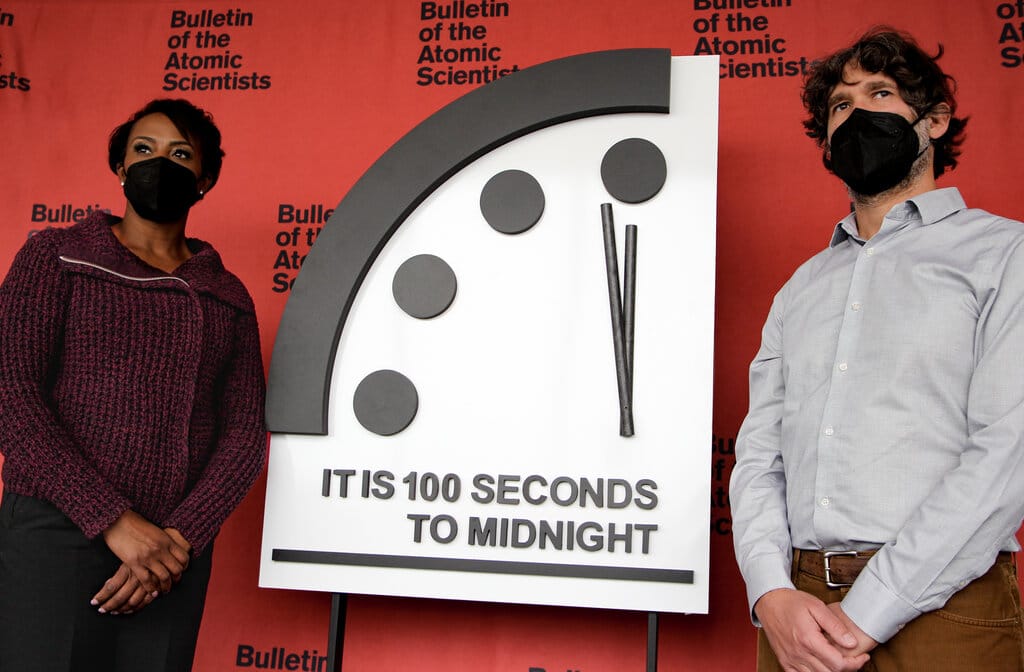The past three years are the closest the Doomsday Clock has been to midnight in its 75-year history due to the rise of nuclear proliferation and the weak global climate action.
—
The Doomsday Clock, which was first unveiled 75 years ago to illustrate how close humanity is to destroying the world, remains at 100 seconds to midnight, according to the Science and Security Board of the Bulletin of the Atomic Scientists.
The clock hand has not moved since 2020, making the past three years closer to midnight than any period in its history, including the Cuban missile crisis during the Cold War.
“The world is no safer than it was last year at this time,” said Rachel Bronson, the president and CEO of the Bulletin of the Atomic Scientists. “The Doomsday Clock continues to hover dangerously, reminding us how much work is needed to ensure a safer and healthier planet.”
When the clock was first introduced in the wake of the Manhattan Project, it was to show the world how close the planet was to annihilation by nuclear weapons. But on recent years, the scientific panel has also been taking into account the effects of climate change and other threats to humanity in setting the clock.
While the panel notes that there have been some global positive developments in the past few years, including the renewed talks over the Iran nuclear programme and a US administration that believes in climate science where President Biden has made a pledge to halve greenhouse gas emissions by 2030, they are not enough to move the clock back.
You might also like: ‘Climate Clock’ Unveiled in New York City
“The Doomsday Clock is holding steady at 100 seconds to midnight. But steady is not good news,” said Sharon Squassoni, the co-chair of the Bulletin’s science and security board. “In fact, it reflects the judgement of the board that we are stuck in a perilous moment, one that brings neither stability nor security.”
The continued proliferation of nuclear weapons, the weak global actions to address and combat climate emergency – in light of the COP26 UN climate summit where countries agreed to only “phase down” and not “phase out” coal – and the rise of biological threats that was highlighted by the COVID-19 pandemic have been cited to be the main factors in the decision to not move the clock hand.
The panel noted that disinformation also played a big role in keeping the clock at the closest point to midnight in history, particularly on its impact on democracy, climate change, and the pandemic, which is preventing people from taking action against global warming and the climate crisis, as well driving growing scepticism in democratic systems are that in currently in place.
Featured image by: Thomas Gaulkin/Bulletin of the Atomic Scientists


















